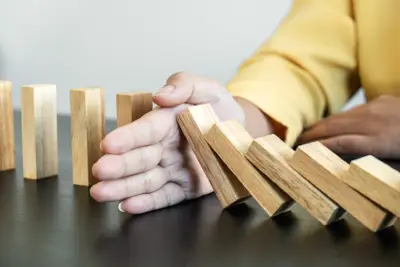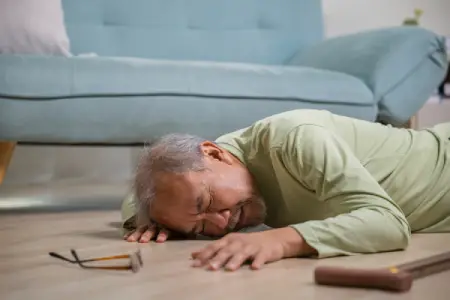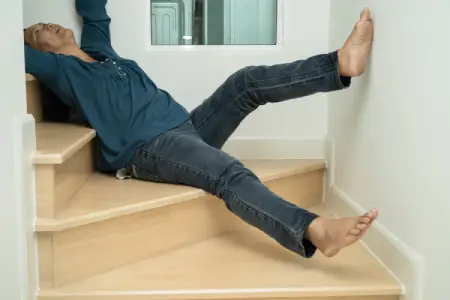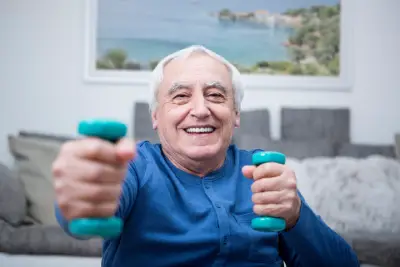

Falling incidents and needing to take steps towards preventing falls are often associated with much older people. Research conducted for Saga Magazine showed that anyone over the age of 50 could be at a higher risk of falling than they might realise. A survey involving 9,521 participants aged 50 and over unveiled a significant gap between people’s perceptions of their risk and the actual incidence of falls.
Those aged 50-59 were nearly twice as likely to experience a fall as they believed, with only 7% acknowledging the risk, whereas 13% in this age group had already fallen. This disparity between perception and reality is concerning, as with a little bit of support and effort preventing falls can be relatively easy. The estimated cost to the NHS is a staggering £2.3 billion every year, that’s equivalent to £6.3 million per day! Around 30% of individuals over 65 will experience a fall within the next year.
Life Changing
The effects can be catastrophic, we hear about hip replacements a lot and when surgery is elective the recovery can be relatively fast and actually improve a persons life. However once a person has fallen and fractured their pelvis or femur, the job of putting it back together is far more complex. The return to what we call ‘the patients baseline’ I.E their condition before falling, is far less likely and the results can be life changing.
What cost?
Falling can severely impact an individual’s confidence and independence, put a burden of care on families and wipe out savings paying for adjustments and ongoing support, not to mention the cost to the NHS. Fortunately, several minor adjustments to the home, alongside strength and balance training can help prevent many of these entirely avoidable accidents.
Understanding the Risk Factors
The increased vulnerability to falls as we age can be attributed to a number of factors. These can be categorised in three ways: Intrinsic factors (related to personal health), extrinsic factors (environmental hazards), or lifestyle-related factors.
Intrinsic factors include previous falls, health conditions such as Parkinson’s or stroke, memory impairment, or vision problems. These need to be carefully managed alongside healthcare professionals and adjustments to property and equipment should be considered.
Extrinsic factors encompass environmental hazards like stairs, rugs, low furniture, pets, or an unorganised living space that doesn’t cater to your needs. With a little bit of thought and planning these are easily overcome and we recommend speaking with an occupational therapist to have your home assessed. Many local authorities provide a free service and you can request more information.
Lifestyle factors may involve an inadequate diet that lacks essential nutrients for maintaining strength, inadequate hydration, or engaging in riskier activities that may have been manageable when younger, like climbing on chairs, tables, or roofs.
Preventing Falls
The single biggest factor is loss of strength through lack of movement and exercise. The good news is it’s never too late to start and we can help. By introducing simple chair based exercises initially and then progressing as the patient develops, we can improve balance and stability and help in preventing falls.
How to Take Preventative Measures
Falls are often multifactorial, influenced by elements like diminished muscle strength (sarcopenia), dizziness, balance issues, and various other factors. Medications can contribute to lethargy and confusion, while alcohol can slow reactions and stability.
To mitigate the risk of falls, a thorough assessment of your home and garden is essential. Identify potential hazards such as poor lighting, loose rugs, or exposed wires. Seeking an outside opinion can be invaluable, as familiarity can sometimes lead to the oversight of potential dangers. Certain regions offer specialized Falls Services, comprised of a multidisciplinary team capable of evaluating fall risks and recommending preventive measures. These could include a home visit by an occupational therapist or physiotherapist who can assess both the individual and the living space and provide advice on aids like specialized chairs, handrails, stairlifts, or mobility devices.
Reducing Fall Risks: Practical Tips
- Maintain a Healthy Lifestyle: Staying physically active is crucial for maintaining strength and balance. This is singularly the most effective way of preventing falls. Consult a physiotherapist for tailored exercises that are suitable for your needs. A nutritious diet and proper hydration are equally important.
- Safety at Home: Ensure that high-traffic areas in your home, such as corridors, stairs, and hallways, are well-lit and clutter-free. Avoid unnecessary risks and seek help for tasks like changing light bulbs or DIY jobs. Fit rails and ramps to reduce trips.
- Trip Hazards: Rugs, cables and transitions between flooring are just some of the potential risks that we tend to overlook.
- Footwear: Wearing open backed slippers on stairs or kitchen floors, contribute to a high number of falls. Worn soles can lead to slipping and things like flip flops should be avoided.
- Regular Health Screenings: Schedule regular hearing and eyesight checks. Keep prescriptions for glasses and hearing aids up to date. Review your medications with your GP or pharmacist, especially if you take multiple drugs. Podiatry services can contribute to stability. Address mood issues that may impact fall risk.
- Improved Lighting: Aging eyes require more light. Replace bulbs with brighter options, favoring LED or halogen bulbs over energy-saving ones. Use table lamps for added illumination where needed.
- Bone Health: Adequate calcium, magnesium, and vitamin D intake is crucial. Consume dairy products, leafy greens, pulses, beans, dried fruit, and oily fish. Consider vitamin D supplements, especially between April and October.
- Medication Review: If you’re on multiple medications, particularly those linked to dizziness, consult your GP for a medication review.
- Communication: Don’t keep falls a secret. If you or someone you know experiences a fall, inform your GP promptly, there is plenty of help available.
Further Action
If you are concerned about a relative or yourself, you can contact your GP for a referral, alternatively if you do not want to wait you can book a private consultation with us where we will be happy to assess your risks and provide a suitable plan or referral.
For more in-depth guidance on fall prevention, Saga has released a 32-page comprehensive guide, developed in partnership with the Chartered Society of Physiotherapy (CSP) and Public Health England (PHE). Download your copy of Saga’s Guide to Staying Steady here.


